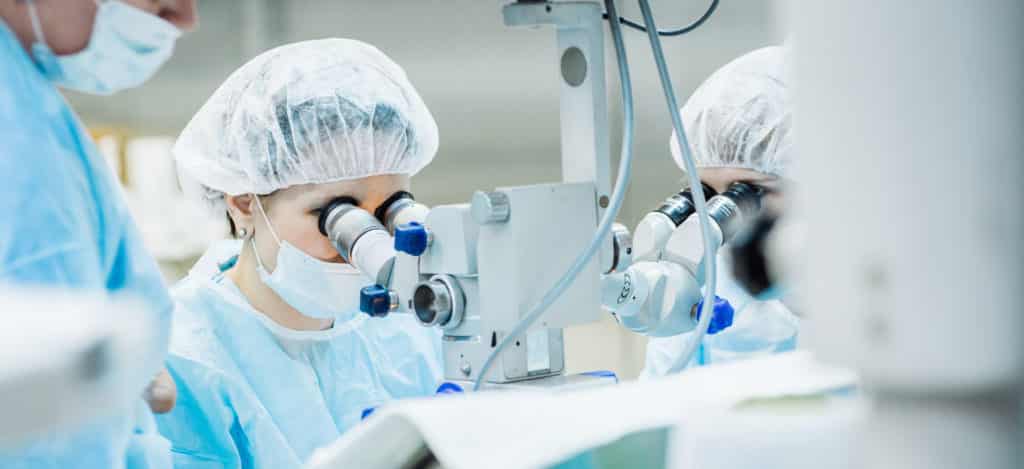If you’re experiencing dim, clouded or blurred vision and have greater sensitivity to light, there’s a chance that you may be suffering from cataracts.
If cataracts are present then cataract surgery can successfully restore your vision, but what is cataract surgery and what happens during the procedure? Let’s take a look.

What is cataract surgery?
Cataracts are clouding or opacification of the natural lens inside the eye. To treat cataracts the natural lens needs to be removed and replaced with an artificial lens.
The artificial lens is made from a special type of plastic which is inert inside the eye (which means the body can’t reject it). They are also designed to block harmful ultraviolet light from entering the eye.
What happens during cataract surgery?
Before the surgery
Scans will be done prior to cataract surgery to measure the shape and size of your eye. This will help to determine the correct power and type of lens implant for you.
There is a wide variety of lenses available for you to choose from, including monofocal (distance or reading focus), multifocal/trifocal (reading and distance focus) and extended depth of focus (distance and arm’s length vision). A thorough pre-operative eye examination is important as not all lens types are suitable for all patients.
During the surgery
Cataract surgery is classed as an outpatient procedure that normally takes 10-15 minutes to complete.
Your pupils will be dilated by applying eye drops to your eye. You will then see your anaesthetist who will select the best type of sedation based on your general health and allergies. Most patients are given a local anesthetic to numb the eye area and a sedative to help you feel relaxed.
There are two common surgical methods used to remove cataracts;
Phacoemulsification
During this procedure Dr Wei will make a very small incision in your cornea (the front of your eye) and insert a very thin ultrasound probe into the lens with the cataract.
Then, Dr Wei will use the probe to emulsify (break up) the cataract and remove the tiny fragments. The lens capsule (the back of the lens) remains intact as a resting place for the artificial lens. Most patients will not require any stitches as the incision is so small.
Femtosecond laser assisted cataract surgery (FLACS)
A less common procedure for cataract removal is known as Femtosecond laser assisted cataract surgery. With this option a laser is used instead of surgical instrument to make the incision, open the lens capsule and break up the lens. The rear capsule of the lens will be left behind as a resting place for the artificial lens.
This procedure may be preferred if you have other eye issues. If Dr Wei thinks this method will be beneficial for you he will discuss it during your pre operative consultation.
After the surgery
After your cataract surgery you will notice colours are much brighter. The vision will take a few days to become clear, but normally you see well enough to drive 2 days after your surgery.
You will have a follow-up appointment in the first few days after surgery then at 4-6 weeks.
Contact our experts
If you think you have cataracts and would like to book a consultation with an experienced and highly regarded surgeon then our team at Pacific Eye Clinic on the Gold Coast can help.
With more than 20 years of experience in cataract surgery, you can rest assured that you’re in safe hands with our qualified experts. Give our team a call today on 07 5647 3484 or email us at info@pacificeyeclinic.com.au.
Author

Dr Marc Wei
Dr. Marc Wei is the principal specialist laser and cataract surgeon at Pacific Eye Clinic in Southport on the Gold Coast. He has 20 years of trusted experience in advanced laser cataract surgery and has completed more than 15,000 procedures over the course of his career.

Dr Marc Wei
Dr. Marc Wei is the principal specialist laser and cataract surgeon at Pacific Eye Clinic in Southport on the Gold Coast. He has 20 years of trusted experience in advanced laser cataract surgery and has completed more than 15,000 procedures over the course of his career.



